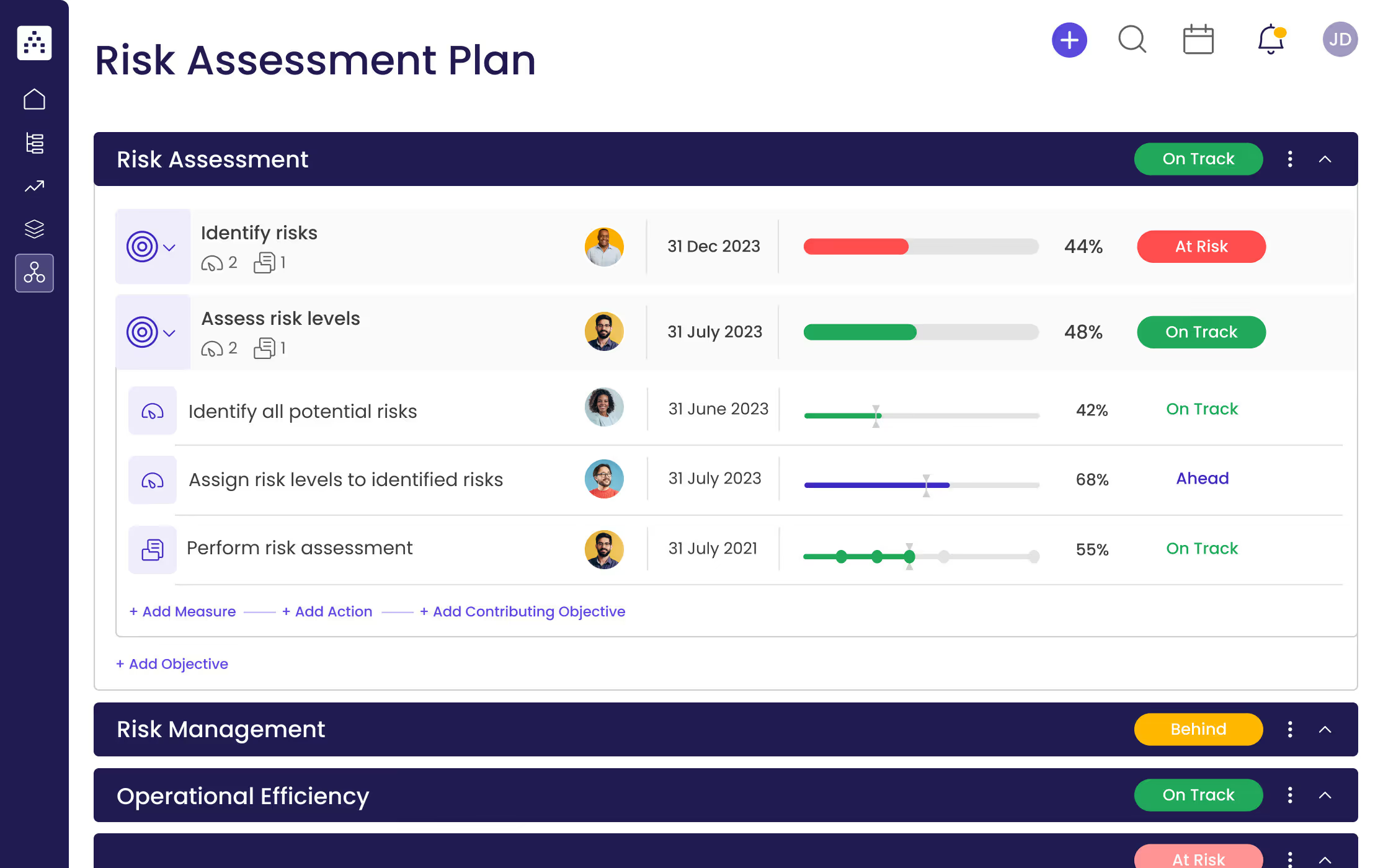What is a Risk Assessment Plan?
A Risk Assessment Plan outlines the steps for assessing and managing the risks that an organization may face. It helps organizations identify potential risks, assess their likelihood and severity, and develop strategies to mitigate or eliminate those risks. The plan should be tailored to the organization's specific goals, resources, and capabilities to ensure that it meets their needs.
What's included in this Risk Assessment Plan template?
- 3 focus areas
- 6 objectives
- 6 projects
- 6 KPIs
Each focus area has its own objectives, projects, and KPIs to ensure that the strategy is comprehensive and effective.
Who is the Risk Assessment Plan template for?
The Risk Assessment Plan template is designed to help organizations of all sizes and industries create a plan to assess and manage their risks. It provides a framework to identify potential risks, assess their levels, and develop strategies to mitigate or eliminate them. The template is easy to use and can be customized to fit the individual needs of an organization.
1. Define clear examples of your focus areas
Focus areas are the key areas of your organization on which you want to focus your risk assessment plan. Examples of focus areas include risk assessment, risk management, and risk response. Each focus area should have its own objectives and associated strategies.
2. Think about the objectives that could fall under that focus area
Objectives are the specific goals that you want to achieve in each focus area. Each objective should be measurable and achievable. Examples of objectives include identifying risks, assessing risk levels, developing a risk management plan, and implementing risk responses.
3. Set measurable targets (KPIs) to tackle the objective
Key performance indicators (KPIs) are measurable targets used to track the progress of an objective. Examples of KPIs include identifying all potential risks, assigning risk levels to identified risks, establishing a risk management plan, and implementing a risk response plan.
4. Implement related projects to achieve the KPIs
Projects are the actions taken to achieve the KPIs associated with an objective. Examples of projects include performing risk assessments, assigning risk levels, creating risk management plans, and executing risk response plans.
5. Utilize Cascade Strategy Execution Platform to see faster results from your strategy
Cascade Strategy Execution Platform helps organizations create, implement, and track their risk assessment plans. With Cascade, organizations can easily define focus areas, develop objectives, set KPIs, and implement related projects to achieve their goals faster and more efficiently.


